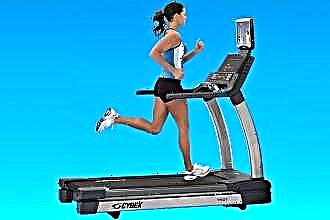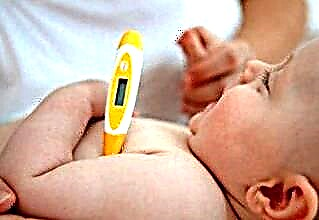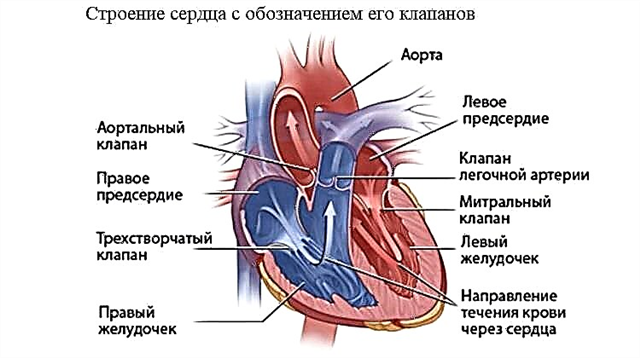Blood pressure is one of the key indicators of the human body's vital activity, and almost everyone knows about the characteristics of hypertension and hypotension. But when a doctor diagnoses: lability of blood pressure, then many have a natural question: "what is it?" Before answering it, you need to figure out what causes this disease, what are its symptoms and, most importantly, what treatment is the most effective.
The most accurate answer to the question of what blood pressure lability is is this: it is a temporary increase in blood pressure. Insofar as  the permissible level, beyond which the pressure is considered high, is 140/90, if this value is violated, the diagnosis is made: labile hypertension.
the permissible level, beyond which the pressure is considered high, is 140/90, if this value is violated, the diagnosis is made: labile hypertension.
The word "labile" in translation from Latin means "fickle", "sliding". This characterizes the peculiarity of the disease - the pressure often changes, then sharply increasing, then again decreasing to the normal level. Thus, 3 key features of pathology can be distinguished:
- The pressure rises periodically.
- After a while, it can decrease without any effect on the body.
- At the same time, the decrease occurs quite sharply, which affects the well-being of a person.
At first glance, it may seem that this disease is no different from ordinary hypertension, but in fact there are differences, and they are very important:
- Essential hypertension is characterized by a persistent (permanent) state of high blood pressure, and labile arterial hypertension is characterized by temporary jumps.
- With hypertension, pressure can be stabilized if special drugs are used, while labile blood pressure decreases spontaneously, without the use of drugs.
- Hypertensive patients rarely complain of pressure drops, while the main symptom of labile hypertension is precisely the constant changes in the indicator.
Note
If you yourself have discovered a systematic increase in blood pressure, you should not diagnose yourself and start self-medication. The fact is that quite a few factors affect the pressure, and with the external similarity of the clinical picture, the same symptoms can indicate a different form of the disease. Therefore, the only correct solution would be to consult a doctor for advice, after which you can proceed to the correct and therefore effective treatment.
Causes and symptoms of the disease
Labile arterial hypertension is caused by approximately the same reasons as hypertension:
- hereditary predisposition;
- bad habits (smoking, alcohol, overeating);
- sedentary lifestyle;
- wrong diet;
- constant psycho-emotional stress;
- chronic kidney disease, diabetes mellitus.
A characteristic feature of this disease is that for a long time it may not manifest itself in any way - a person feels as usual, only the head may become a little "heavier", which is perceived by most as ordinary fatigue.
If you do not pay attention and do not take action, the disease will begin to develop, and after a while the following symptoms will appear: sharp pains in the occipital region, which appear quite rarely and disappear completely even without taking medications;
- insomnia, disturbing dreams that occur quite often;
- unexplained nervous tension;
- persistent changes in behavior: irritability, emotional outbursts and unexplained mood swings.
Advice
If you notice some or all of these signs, try a simple experiment: measure your blood pressure with a home blood pressure monitor 3-4 times a day for 1 week (on waking, before bed and during the day at the same time) ... Record all values: if the pressure changes constantly throughout the day, it is very likely that you have labile hypertension. In this case, you need to immediately contact a doctor, because the earlier treatment is started, the more effective it will be.
Features of the course of the disease
Labile hypertension develops progressively, doctors describe 3 stages of the disease:
- Initially, according to the symptoms described by the patients, it is rather difficult to establish an accurate diagnosis, since no obvious abnormalities are detected. The main symptom at this stage is not associated with a physiological, but a mental state - patients often complain of nervous tension and sleep disorders.
- At the second stage, there are also no pronounced health complaints, but an increased level of pressure is instrumentally recorded, which can be described as moderate hypertension. Some patients are characterized by recurrent hypertensive crises, renal dysfunction. However, routine urinalysis gives normal results.
- The symptoms of the disease are pronounced, and patients often experience discomfort due to pressure surges. At this stage, the prerequisites for myocardial infarction often develop, so it is quite dangerous to start the disease.
The rate of development of pathology is not the same, it largely depends on the individual characteristics of a person, his lifestyle and chronic diseases.
Treatment of labile arterial hypertension
After a detailed diagnosis and an accurate diagnosis, the doctor prescribes a course of treatment. Moreover, in each specific case, they proceed from several important circumstances:
- The magnitude and frequency of pressure surges, their relationship with specific factors affecting the patient.
- The presence or absence of chronic diseases that can complicate the course of the disease.
- Features of the psychoemotional state of the patient, his lifestyle.
The course of treatment is always complex in nature and consists of a set of measures, both medication (medication) and non-medication (adherence to the rules of a healthy lifestyle) nature.
The use of drugs has the goal of eliminating not only the symptoms of hypertension, but also the effect on the root cause of the disease. The most commonly used medications are:
- Calcium antagonists are a group of drugs that reduce the concentration of calcium in the cells of the heart, thereby dilating the coronary arteries that supply the heart with nutrients and oxygen, as well as the peripheral vessels. This quickly leads to the stabilization of the pressure.
- Diuretics (diuretics) work in a different way: they stimulate the kidneys, as a result of which more water and salts are excreted from the body, which leads to a decrease in pressure.
- Substances that block the action of an angiotensin-converting enzyme (ACE inhibitor), which constricts blood vessels and thereby increases blood pressure. The drugs in this group include:
- Fozinopril;
- Ramipril;
- Captopril;
- "Lisinopril" and others.
- Beta blockers prevent the synthesis of epinephrine and norepinephrine, the anxiety hormones that increase heart rate and blood pressure.
Non-drug treatments are almost entirely associated with changes in the patient's lifestyle. By following a few simple tips, patients can really help their body. Also, these rules can be successfully used as prevention of heart and vascular diseases:
- Everyday moderate physical activity of any kind (at least 40-60 minutes). The main criterion is a complex effect on the body, and
 the load should be feasible, since excessive physical activity can lead to exactly the opposite effect.
the load should be feasible, since excessive physical activity can lead to exactly the opposite effect. - Diet correction - you should refrain from excessive consumption of salt, foods containing animal fats, fried foods, coffee and energy drinks (it is better to consume more green tea).
- Refusal or maximum restriction in smoking and alcohol consumption.
- Normalization of the psychological climate at work and at home, minimizing stressful situations.
- Compliance with the regime of work and rest, ensuring adequate sleep (at least 7-8 hours a day) at approximately the same time.
- Sufficient oxygen level in the blood - you need to constantly ventilate the room and take daily walks in the fresh air.
- Finally, it is important to control your blood pressure, for which you can make systematic measurements with a home tonometer according to the regimen advised by your doctor.
Even minimal adherence to the conditions of a healthy lifestyle will help to avoid many health problems. The main thing is to want to take care of your body and monitor your health systematically, and not from time to time.

 the load should be feasible, since excessive physical activity can lead to exactly the opposite effect.
the load should be feasible, since excessive physical activity can lead to exactly the opposite effect.

